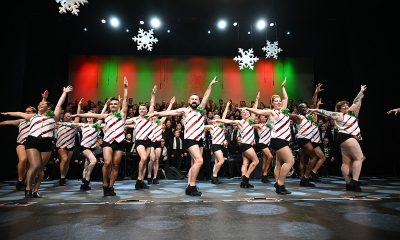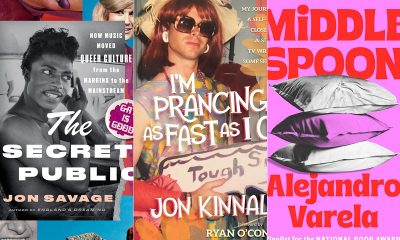Arts & Entertainment
Baltimore’s state-of-the-art arena highlights spring arts scene
Lizzo, Janet, Bruce, Joan Jett and more to christen renovated space
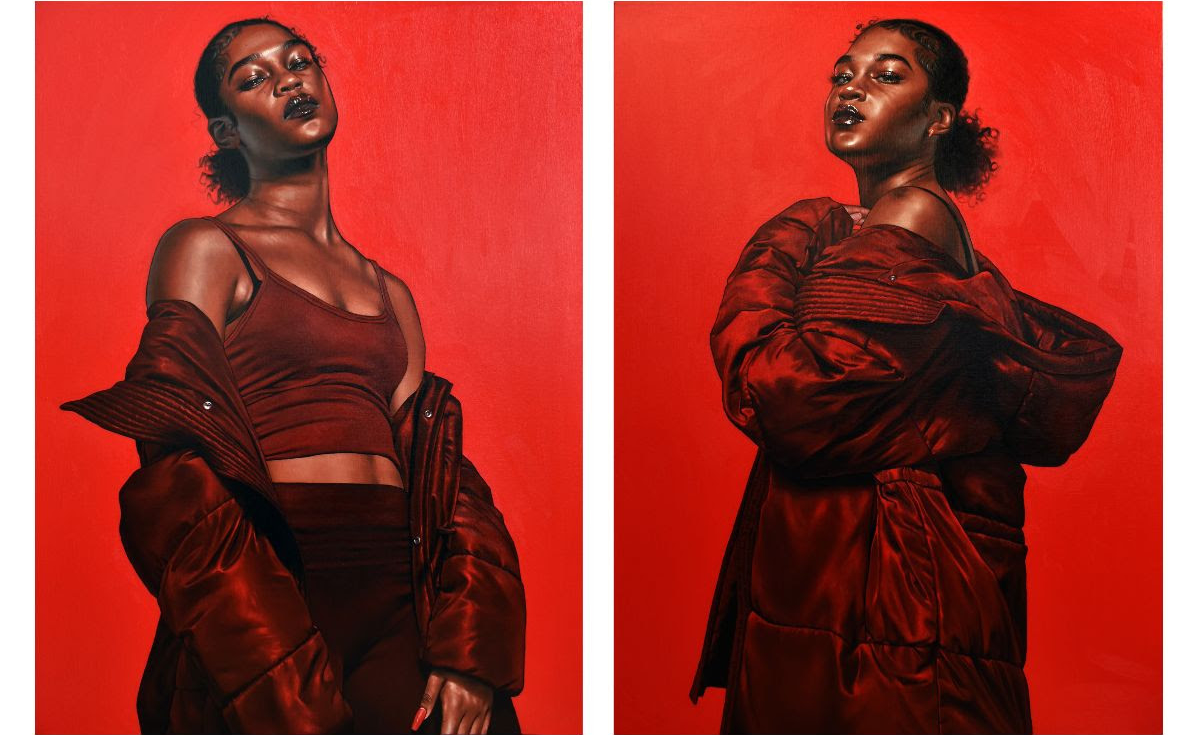
For years, Baltimore missed out on performances by big-name musicians, comedians and others because it didn’t have a 14,000-seat arena capable of attracting them, but not anymore.
Starting in April, more than a dozen acts will be coming to town when the CFG Bank Arena at 201 West Baltimore St. — formerly known as the Royal Farms Arena — reopens following a $200-$250 million renovation designed to turn it into a state-of-the-art sports and entertainment venue.
The arena’s reopening after more than a year of construction is one of the highlights of the spring arts season in Baltimore, along with new exhibits at the Baltimore Museum of Art; new shows at the Hippodrome and Lyric; a new book festival, a John Waters book signing and other events around town.
On April 7, Bruce Springsteen and The E Street Band will be the first performers to appear at the CFG Bank Arena, a concert that’s being billed as opening night for the refurbished and rebranded hall.
The Boss will be followed by: Eagles Hotel California Tour, April 8; Straight Jokes No Chaser, April 14; Jeff Dunham Still Not Canceled, April 15; Adam Sandler, April 21; New Edition: Legacy Tour with Keith Sweat, Guy and Special Guest Tank, April 22; Monster Jam, April 28 to 30; AEW Dynamite, May 3; Lizzo, May 9; Janet Jackson: Together Again with Special Guest Ludacris, May 13; Anita Baker: The Songstress with the Legendary Babyface, May 14; blink-182 Tour 2023, May 26; Stars on Ice, June 2; Bryan Adams: So Happy It Hurts 2023 with Joan Jett and The Blackhearts, June 6, and Dude Perfect PandaMonium, June 25.
Performances scheduled for later in 2023: Chris Stapleton’s All-American Road Show; Thomas Rhett, Lionel Richie and Earth, Wind & Fire, and Kiss – the End of the Road Tour. The CFG Bank Arena website is cfgbankarena.com.
Owned by the City of Baltimore, the arena opened in 1962 as the Baltimore Civic Center and later was renamed the 1st Mariner Arena (2003 to 2013) and the Royal Farms Arena (2014 to 2022). It was one of the first places The Beatles appeared during their augural trip to America in 1964, and Martin Luther King Jr. spoke there in 1966. The Baltimore Bullets and Baltimore Clippers played there for many years.
As the arena grew older, city officials contemplated constructing a replacement elsewhere but couldn’t decide on a location. They eventually opted to keep the existing venue and bring in a new management team to upgrade it to be competitive with other East Coast arenas. The decision was part of a larger effort to revitalize the west side of downtown Baltimore, where a new building for the city’s historic Lexington Market recently opened several blocks away.
The CFG Bank Arena team is led by the Oak View Group of Los Angeles, in association with Thirty Five Ventures, the investment company of NBA player Kevin Durant and his business partner, Rich Kleiman, and recording artist Pharrell Williams. The Oak View Group team funded the improvements in return for rights to manage and lease the facility, and it’s offering seat leases as part of the ticketing options.
Renovation work began in early 2022 and included a revamped seating configuration; new concourses, restrooms, and concessions areas; updated mechanical systems and a redesigned exterior. The refurbished arena had a test run last month, when Baltimore hosted the Central Intercollegiate Athletic Association’s Men’s and Women’s Basketball Tournaments, but there was still more work to finish. Starting in April, managers say, all the renovations will be complete and it will be ready for the entertainers.
Visual arts events
Baltimore Museum of Art, 10 Art Museum Drive (artbma.org): From April 5 to July 16, the BMA will present “The Culture: Hip Hop and Contemporary Art in the 21st Century.” Coinciding with the 50th anniversary of the emergence of hip hop in the 1970s, the exhibit will examine the global phenomenon of hip hop and its impact on music, fashion, technology and the visual and performing arts.
More than 90 works of art and fashion, including many by LGBTQ artists, will show the many ways hip hop has influenced contemporary society. According to the BMA, queer artists with work in the exhibit include: Lauren Halsey; Rashaad Newsome; Mark Bradford; Julie Mehretu; Dapper Dan; Telfar Clemens; Tschabalala Self; Amani Lewis; John Edmonds; Nina Chanel Abney; Jonathan Lyndon Chase; Caitlin Cherry; Devan Shimoyama; Texas Isaiah; Shabez Jamal; Eric N. Mack and Rozeal. Non-cisgender artists include Isaiah, Chase, Lewis and Jamal.
The exhibit is co-organized by the BMA and the Saint Louis Art Museum. One of the curators is Asma Naeem, the BMA’s new Dorothy Wagner Wallis Director. Other curators include Gamynne Guillotte, the BMA’s chief education officer, and Hannah Klemm and Andrea Purnell, from the Saint Louis museum.
Also opening at the BMA this spring: “Histories Collide: Jackie Milad x Fred Wilson x Nekisha Durrett,” April 26, 2023 to March 17, 2024: New works by Milad and Durrent in dialogue with Wilson’s Artemis/Bast (1992); “Martha Jackson Jarvis: What the Trees Have Seen,” May 7 to October 1, 2023, featuring mixed media works by Jarvis that imaginatively trace a free Black militiaman’s journey from Virginia to South Carolina in the American Revolution; “Recasting Colonialism: Michelle Erickson Ceramics,” May 7 to October 1, 2023; “The Matter of Bark Cloth,” May 7 to October 1, 2023, and “Wild Forms: Fauve Woodcuts,” May 14 to October 15, 2023.
American Visionary Art Museum, 800 Key Highway: The main exhibit is “ABUNDANCE: Too Much, Too Little, Just Right” (Championing good, honest work from the hand and the heart), curated by Gage Branda. Also: AVAM’s Logan Visionary Conference 2023, March 19, 2 p.m. to 4 p.m.; Kinetic Sculpture Race, May 6.
Walters Art Museum: 600 North Charles St. (thewalters.org): “Quiet Beauty: The Watercolors of Leon Bonvin,” opened in February; “Arts of the Medieval Mediterranean,” is ongoing, and “Across Asia: Arts of Asia and the Islamic World,” a new installation of the museum’s Asian and Islamic collections, opens April 23.
The Peale, 225 Holliday St. (thepeale.org): “Compensation for Loss” exhibition, March 19 to April 30, and Submersive Productions Performances: Katalepsis, March 24 to April 30.
Maryland Center for History and Culture, 610 Park Avenue (mdhistory.org): “Claire/McCardell,” an exhibit about Claire McCardell, an influential designer of women’s clothing from the 1930s to the 1950s and beyond; “Discover Maryland;” “The Unfinished Revolution: Maryland in the Wars for Independence,” and “Passion and Purpose: Voices of Maryland’s Civil Rights Activists.”
Baltimore Museum of Industry, 1415 Key Highway (thebmi.org): “Fire & Shadow: The Rise and Fall of Bethlehem Steel,” documenting the 125-history of the Sparrows Point steel mill.
B&O Railroad Museum, 901 West Pratt Street (borail.org): New permanent exhibit: “Freedom Seekers on the B&O Railroad.”
Waverly Book Festival (waverlymainstreet.org): A new book festival organized to replace the Baltimore Book Festival, 32nd and Barclay streets and other locations, April 28 to 30.
John Waters at Atomic Books, 3620 Falls Road (atomicbooks.com): As part of a book tour for the release of the paperback version of his novel, “Liarmouth: A Feel Bad Romance,” writer and filmmaker John Waters will sign books on May 12 starting at 7 p.m.
Performing arts events
Hippodrome Theatre, 12 South Eutaw St., (Baltimore.broadway.com): Spring shows include: To Kill A Mockingbird, March 14 to 19; Respect – Aretha Franklin Tribute, March 23; Aziza, March 25; Lewis Black, April 2; Hadestown, April 12 to 22; Rock From The Heart, April 22; Shen Yun Performing Arts, April 28-30; Dino Ranch Live, May 6; Six the Musical, May 9 to 14, and Frozen, June 7 to 18.
The Lyric Baltimore, 140 West Mount Royal Ave., (lyric.baltimore.com): Royal Comedy 2023: Sommore, Bruce Bruce, Lavell Crawford and Special K, March 18; Hits! The Musical, March 19; Killer Queen, March 25; Bored Teacher Comedy Hour, March 31; Good Friday: Carl Thomas, Lyfe Jennings and Christopher Williams, April 7; Brit Floyd, April 15; Soul Marathon: Bloodstone, April 22; Yes Epics & Classics featuring Jon Anderson and The Band Geeks, May 6; Fortune Feimster, May 19; Boz Scaggs, May 20; Puscifer, June 1; John Mellencamp, June 2; Kansas – The Band, June 3; Luis Angel, June 4; Bad Friends Podcast: Andrew Santino and Bobby Lee, June 16; Stephen Sharer, June 17, and Les Claypool’s Fearless Flying Frog Brigade and W.I.T.C.H.
Creative Alliance, 3134 Eastern Ave. (creativealliance.org): The High & Wides with Hannah Lee Thompson, March 31; 2023 Marquee Ball, April 22; Alison Crockett Presents Echoes of an Era: The Jazz Sides of Chaka Kahn, April 28, Ngaiire, May 5; Brandee Younger, June 22, and Madison McFerrin, June 23.
Baltimore Center Stage, 700 North Calvert St., (centerstage.org): Tiny Beautiful Things, March 9 to April 2.
Everyman Theatre, 315 West Fayette St. (everymantheatre.org): The Sound Inside, March 7 to April 2; Harvey, April 25 to May 21, and The World Goes Round, June 6 to July 2.
Arena Players, 801 McCulloh Street (arenaplayersinc.com): Open Admissions and When Men Reduce as Women Do, March 17, 18, 19, 24, 25, 26, 31 and April 1 and 3; Sizwe Banzi is Dead, April 21, 22, 23, 28, 29, 30, May 5, 6, and 7, and Nina, May 26, 27, 28, June 2, 3, 4, 9, 10, 11, 16, 17 and 18.
Live! Casino Hotel Maryland, 7002 Arundel Mills Circle, Hanover, Md., (maryland.livecasinohotel.com): Patti LaBelle, March 10; Air Supply, March 11; Hoops Fest Watch Parties, March 14; Lovers in the Night Spring Concert, March 19; Mixed Martial Arts: Shogun Fights, March 25; Jerry Seinfeld, May 19, and Kevin Hart, June 11.
Baltimore Soundstage, 124 Market Place, presents the Hell in the Harbor Festival over the Memorial Day weekend, May 27 and 28. Its complete spring lineup for March to June, with dozens of acts, is on its website, Baltimoresoundstage.com.
a&e features
Local, last-minute holiday gift ideas
Celebrate the season while supporting area businesses

The DowntownDC Holiday Market is bustling. Union Station is decked out with its annual Christmas tree. Washingtonians have wrapped their houses and apartment balconies with festive lights and holiday decorations. The holiday season is here. And with stockings to fill and empty space under the tree, Washington’s local shops and artists have plenty to offer.
Show your LGBTQ and D.C. pride with the Washington Blade’s annual holiday gift guide.
To embrace the holiday buzz: The Blanco Nwèl cocktail from Alchy Cocktails. This Caribbean eggnog is one of Alchy Cocktail’s seasonal holiday cocktails. The flavor profile is similar to coquito, a traditional Puerto Rican Christmas drink with a coconut base. As a queer and Caribbean-owned business, Alchy Cocktails has been based out of Washington since 2021. Blanco Nwèl is available in both cocktail ($24) and mocktail ($12) online and at a variety of holiday markets, including the Tingey Plaza Holiday Market, the Flea Market at Eastern Market, Union Station’s Main Hall Holiday Market, and more. ($24)
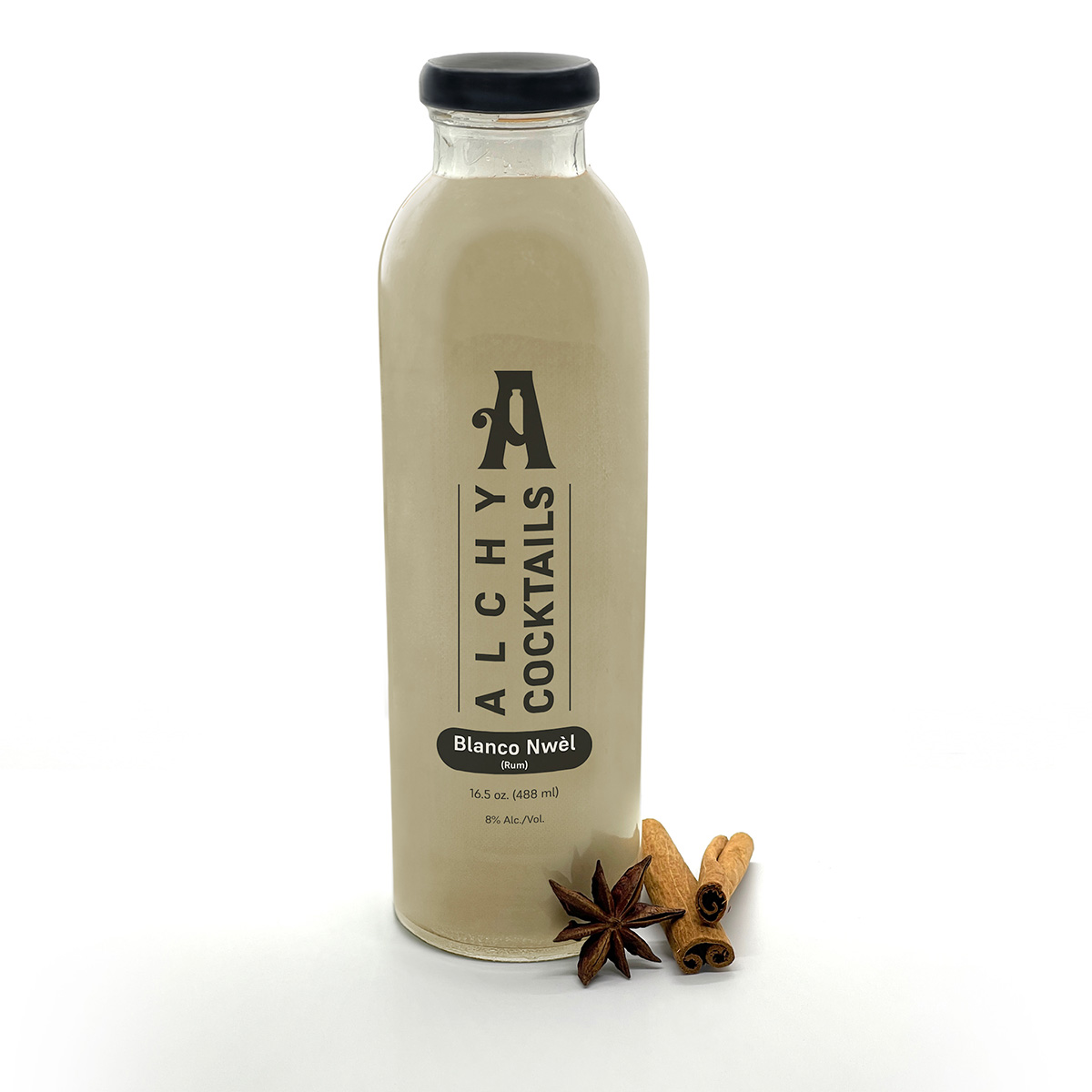
A spicy bite: Gordy’s Cajun Okra from Salt and Sundry. These spicy, tangy pickles pull on Southern Cajun-style flavors, packing a punch with paprika, cayenne, and more. Gordy’s is an LGBTQ-owned and Washington-based brand, making this gift an opportunity to support a local LGBTQ business straight from the jar. This pantry staple is available on Salt & Sundry’s website and at its locations in Union Market, Logan Circle, and its Georgetown holiday pop-up store. ($14)


To celebrate Washington pride: The DC Landmark Tote Bag from The Neighborgoods. Native Washingtonians, visitors, friends and family alike will find something to love about this Washington-themed tote bag. Food trucks, the 9:30 Club, the Metro logo and pandas from the National Zoo are just some of the city’s landmarks depicted across the tote in a red, white, and blue color palette. The tote is a part of the DC Landmarks collection, which donates 10 percent of its sales to the American Civil Liberties Union. The Neighborgoods itself is a local, woman-owned business built out of a passion for screen-printing in 2013. The 100 percent cotton canvas tote is for sale online or at the DowntownDC Holiday Market. ($22)
To give friends and family their flowers: The Flowers Bandana from All Very Goods. This 100 percent cotton bandana was designed in Washington and hand printed in India. Its uniqueness comes in being covered with the faces of Black women, representing a “love letter to all women but especially Black women,” according to All Very Goods. The Black woman-owned and operated business, based out of Northwest Washington, has a mission to celebrate diversity and representation through its products. The bandana intends to give Black women their “flowers.” The Flowers bandana is available for purchase online. ($24)
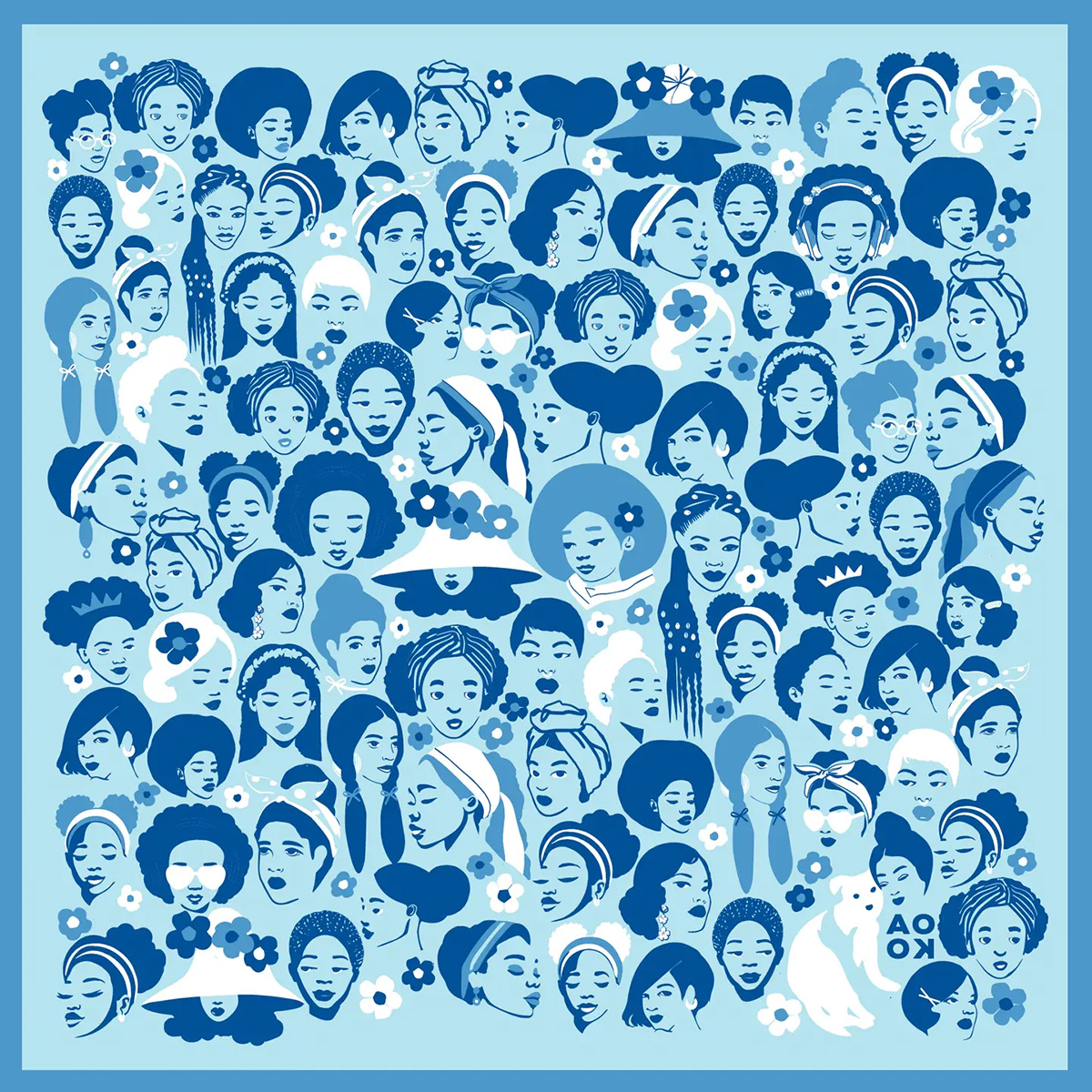
To unlock culinary creativity: The Curious Chef Gift Collection from Each Peach Market. This customizable collection of kitchen oddities — ranging from tinned fish to chili oil — is a quirky gift for the most inventive chefs. The collection is available in a Standard Santa, Extra Goodies and Super Holiday Size for up to $165. The Washington-based market, founded in 2013, permits customers to make the collection special by specifying what unique ingredients are packaged, including products made by local or LGBTQ brands. Each Peach Market offers assembly and pick up in-person at its Mount Pleasant shop and also offers local delivery and nationwide shipping via its website. ($85)

To give a touch of sweetness: The DC Landmark Chocolate Covered Oreo Holiday Cookies from Capital Candy Jar. Wrapped in a festive red bow, this box of nine cookies embraces love for Washington and the holiday season in one. Among the dark and milk chocolate covered cookies are images of the U.S. Capitol, the White House, the Lincoln Memorial, the Jefferson Memorial and festive hollies. The treat, packaged in a Hill East facility just a few blocks from the Capitol, is available for purchase online and at the DowntownDC Holiday Market. ($23.95)

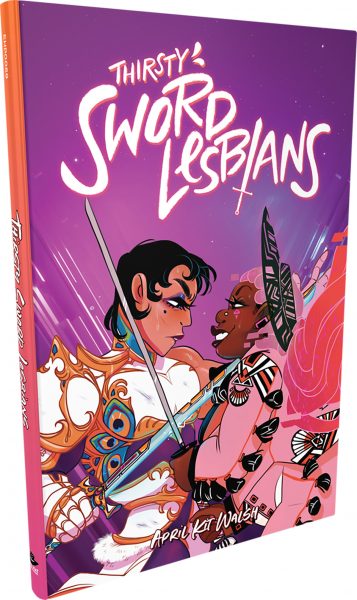
To celebrate queer gaming: Thirsty Sword Lesbians from Labyrinth Games & Puzzles. This roleplaying game embraces lesbian culture by unlocking a world of swords, romance, and battle. Ideal for group settings, the book presents a system of world building and character identities that are best brought to life by creative minds. Labyrinth, which has been a local Washington business for more than 15 years, celebrates non-digital fun through games and puzzles that connect the community. This gift is offered online and at Labyrinth’s Capitol Hill location. ($29.99)
To make a bold statement: The “Resist” T-shirt from Propper Topper. This locally screen-printed black tee features the Washington flag designed within a raised fist, symbolizing both Washington pride, and political resistance. The shirt is made exclusively by Propper Topper, a local Washington business that evolved from a hat shop to a gift store since opening in 1990. The tri-blend unisex shirt is available both for pickup at Propper Topper’s Cathedral Heights location and shipping via the online site. ($32)
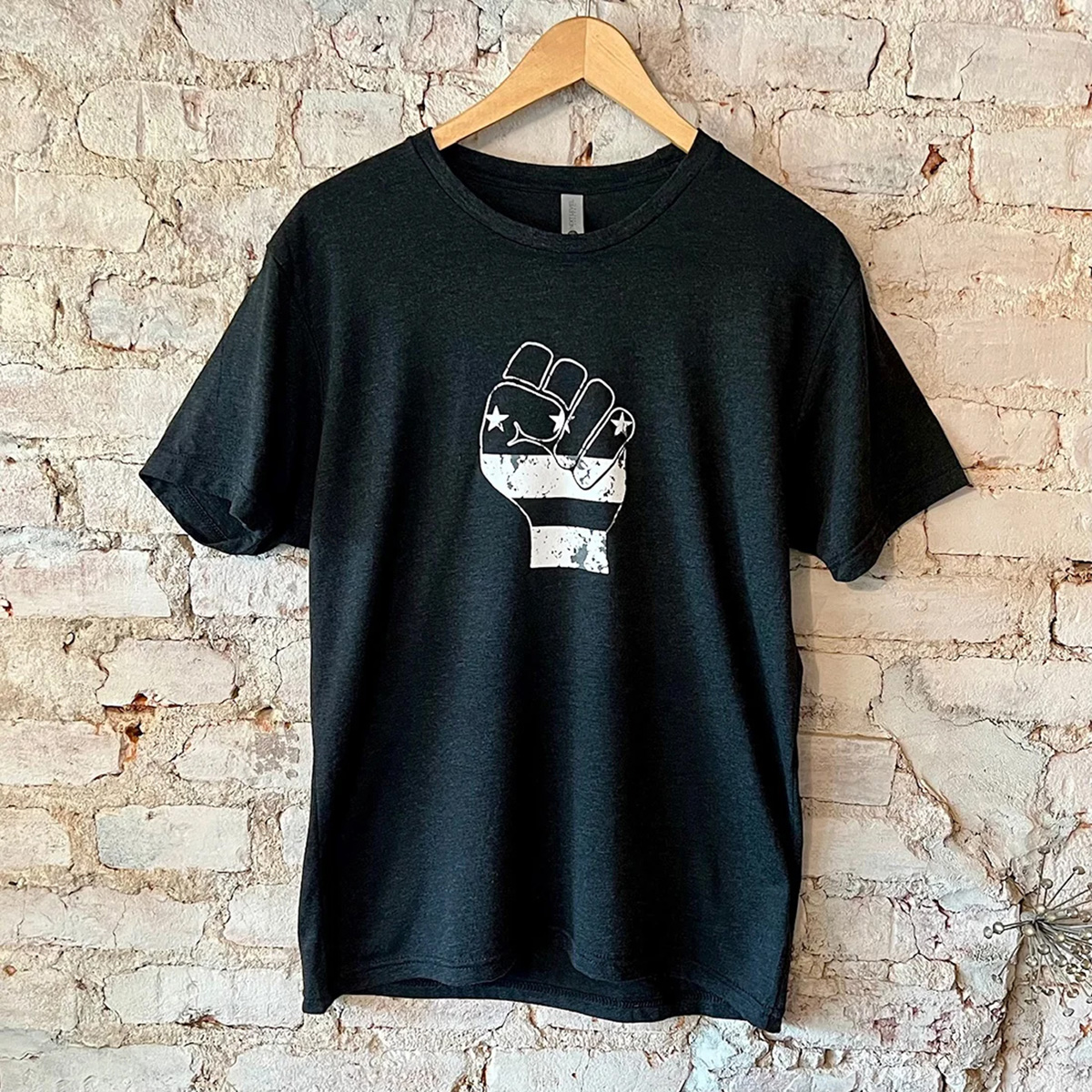
To keep it c(g)lassy: The Glass Ball earrings from Blue Moon Aquarius. Gifting can rarely go wrong when it comes to a new pair of earrings. The unique statement earrings — made of polymer clay, glass, and 18k gold plating over surgical steel — are hand cut, sanded and assembled in Washington, meaning each set is unique. Blue Moon Aquarius, a local brand, is known for its small batch jewelry and home decor designed with clay materials. Available in oxblood, hunter green, lavender, and bluestone color palettes, these earrings are available for purchase on Blue Moon Aquarius’ website and at the DowntownDC Holiday Market. ($48)
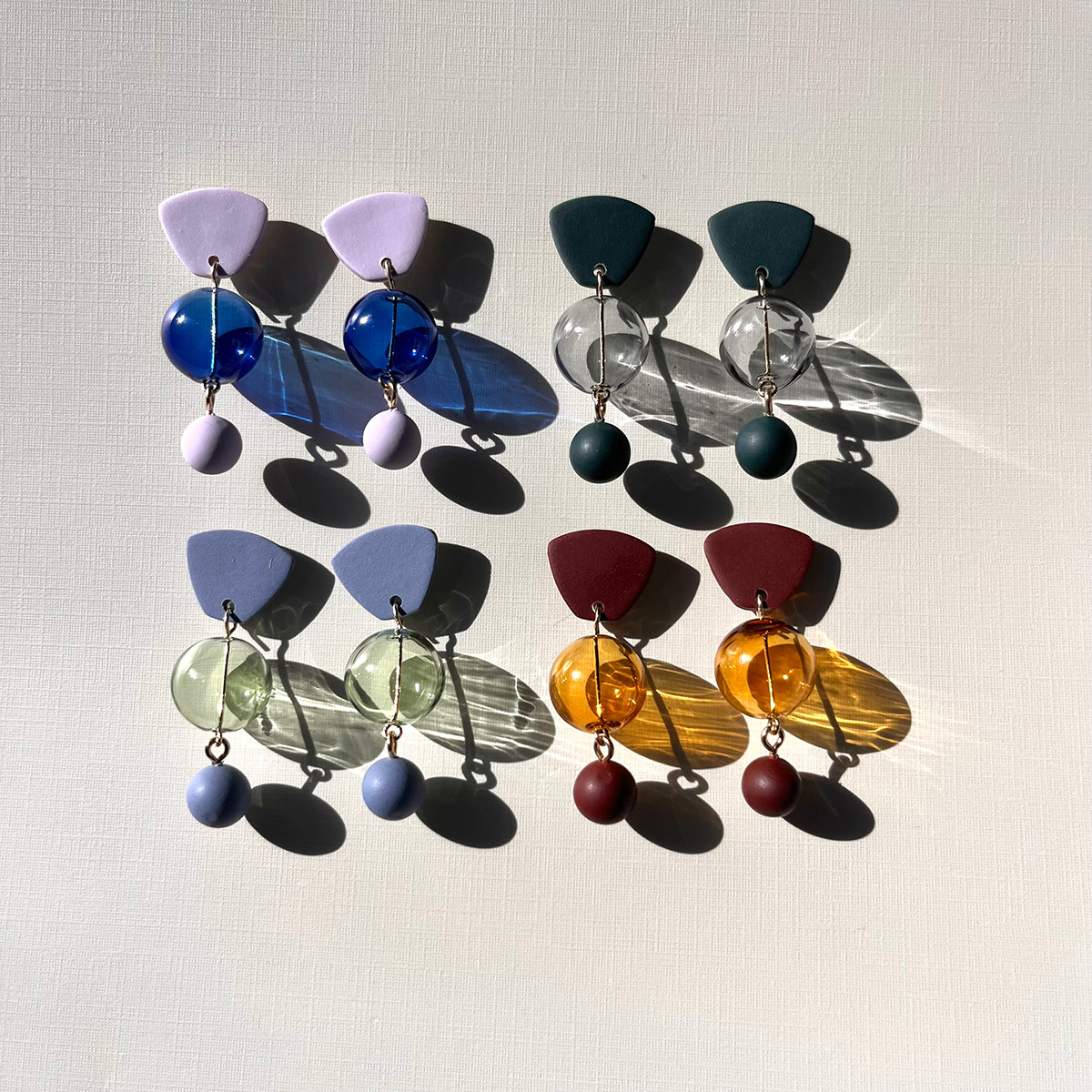
To elevate a holiday tea or charcuterie party: The Honey Flight: Tea Lover’s Selection from BannerBee. This local honey company presents the ideal gift to make cozying up with a cup of tea slightly more special. The Honey Flight contains three types of raw wildflower honey infused with fair trade Ugandan vanilla bean, chai spices, and locally sourced lemon thyme herb. The gift is also an opportunity to uplift a family company based in the Mid-Atlantic that offers all-natural, sustainable products. The flight is available online, at the DowntownDC Holiday Market or at the Arlington Courthouse and Dupont Farmers’ Markets. ($36)

For Baltimore shoppers: If you’re in Charm City, don’t miss Balston Mercantile, opened by a gay couple in June. Their gorgeous shop in the Hampden neighborhood offers an array of unique, upscale finds, from barware and artwork to cookbooks and home decor and more. (849 W. 36th St.)
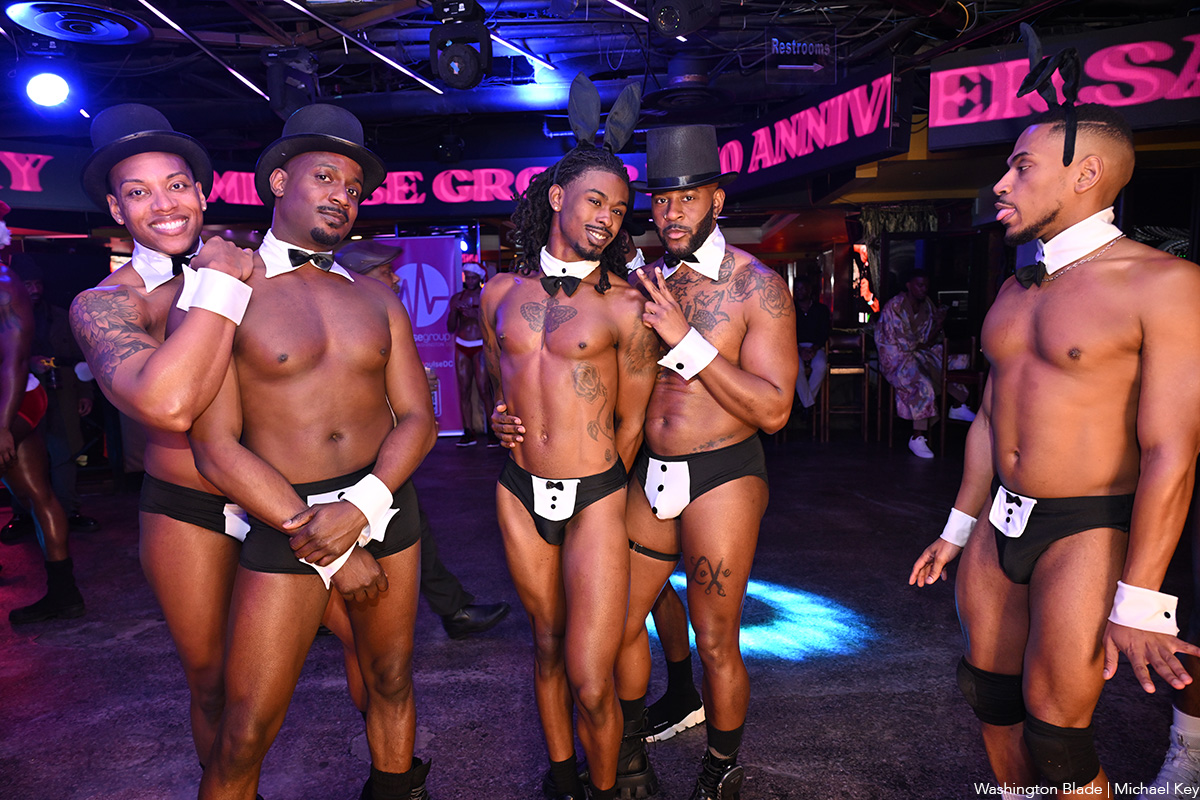
Impulse Group DC held “10’s Across the Board: A Celebration of 10 Years” at Bravo Bravo (1001 Connecticut Ave., N.W.) on Sunday, Dec. 14. Impulse Group DC is a volunteer-led 501(c)(3) and affinity group of AIDS Healthcare Foundation dedicated “to engaging, supporting, and connecting gay men” through culturally relevant health and advocacy work.
(Washington Blade photos by Michael Key)
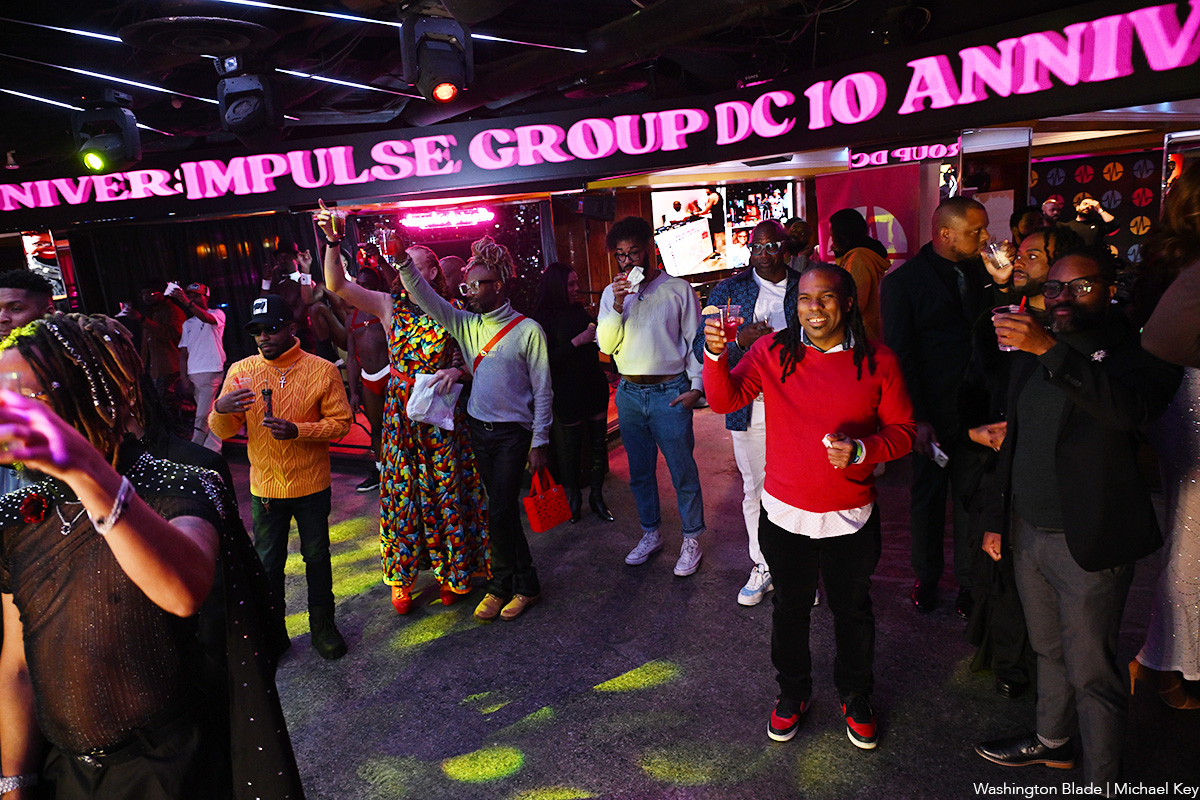
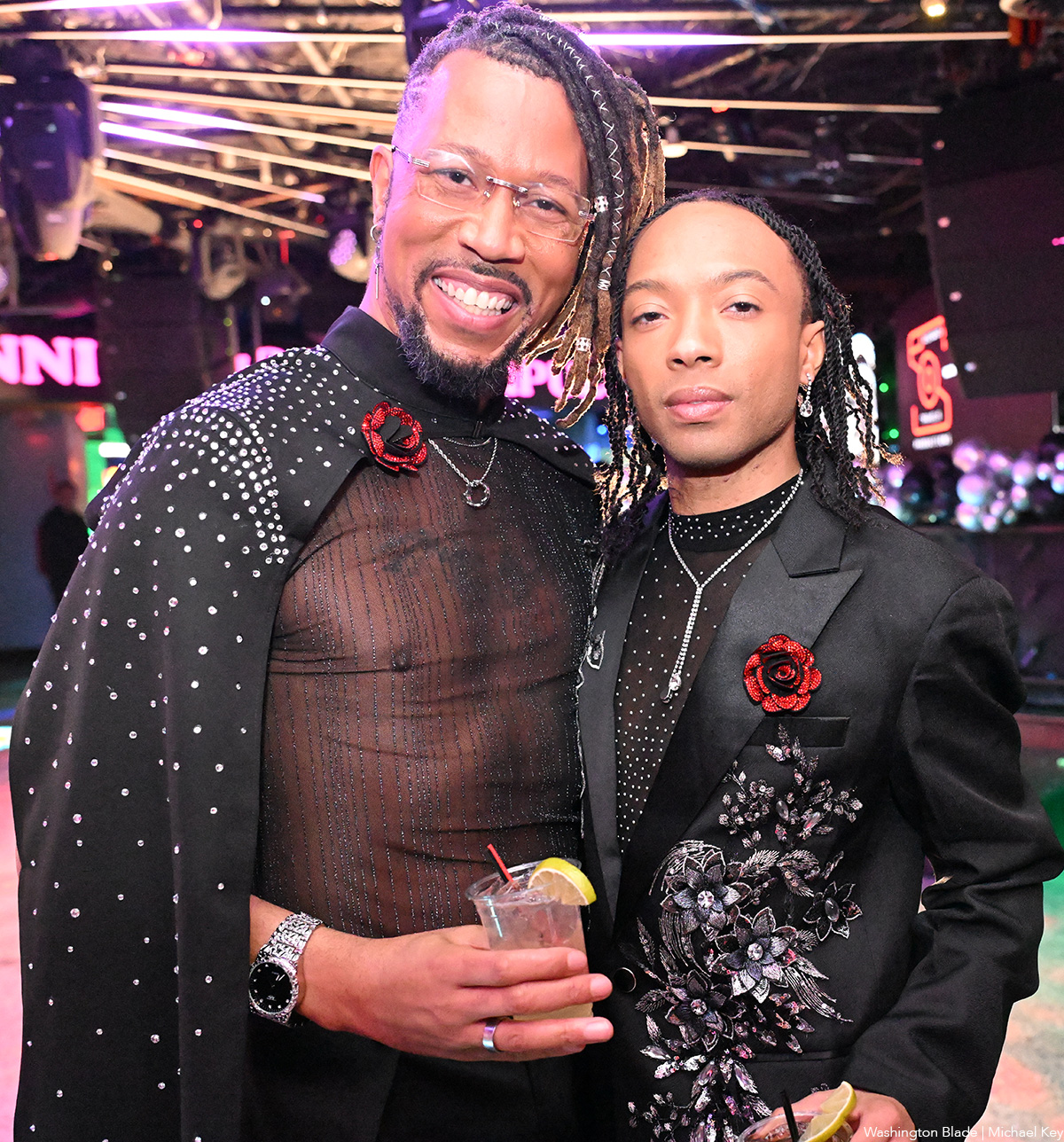
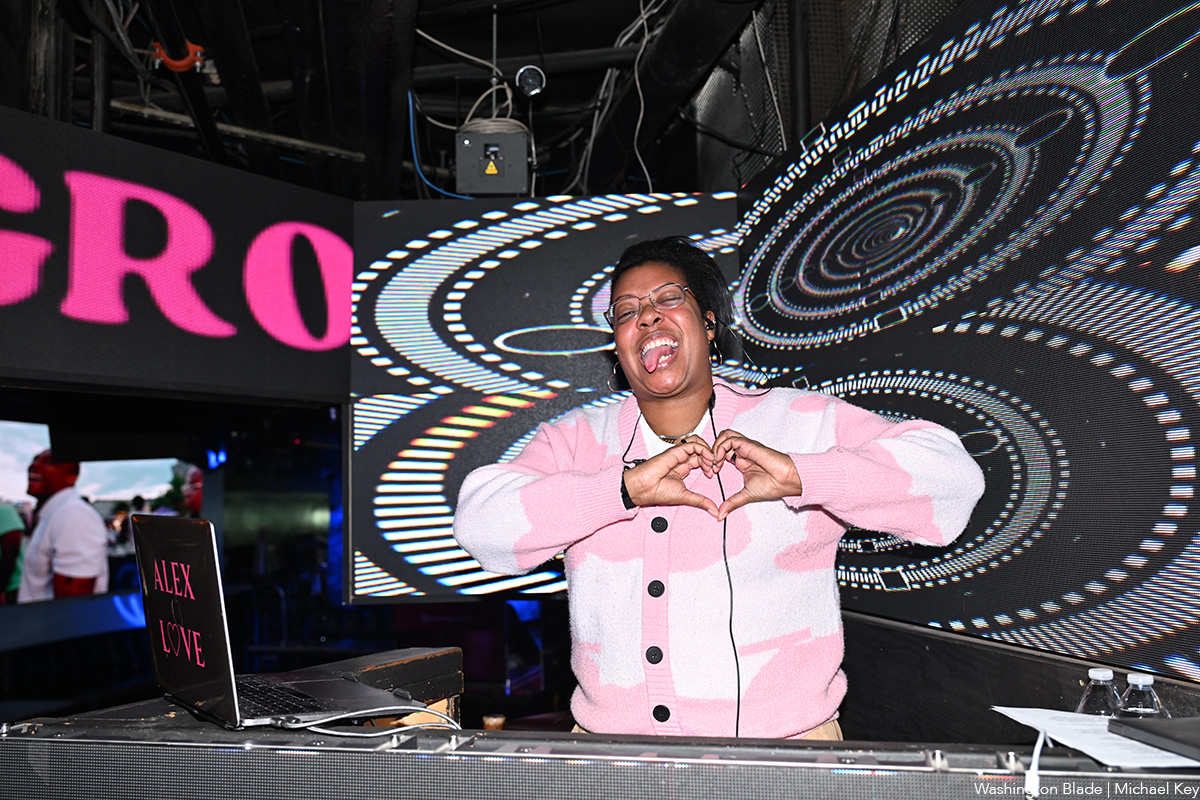
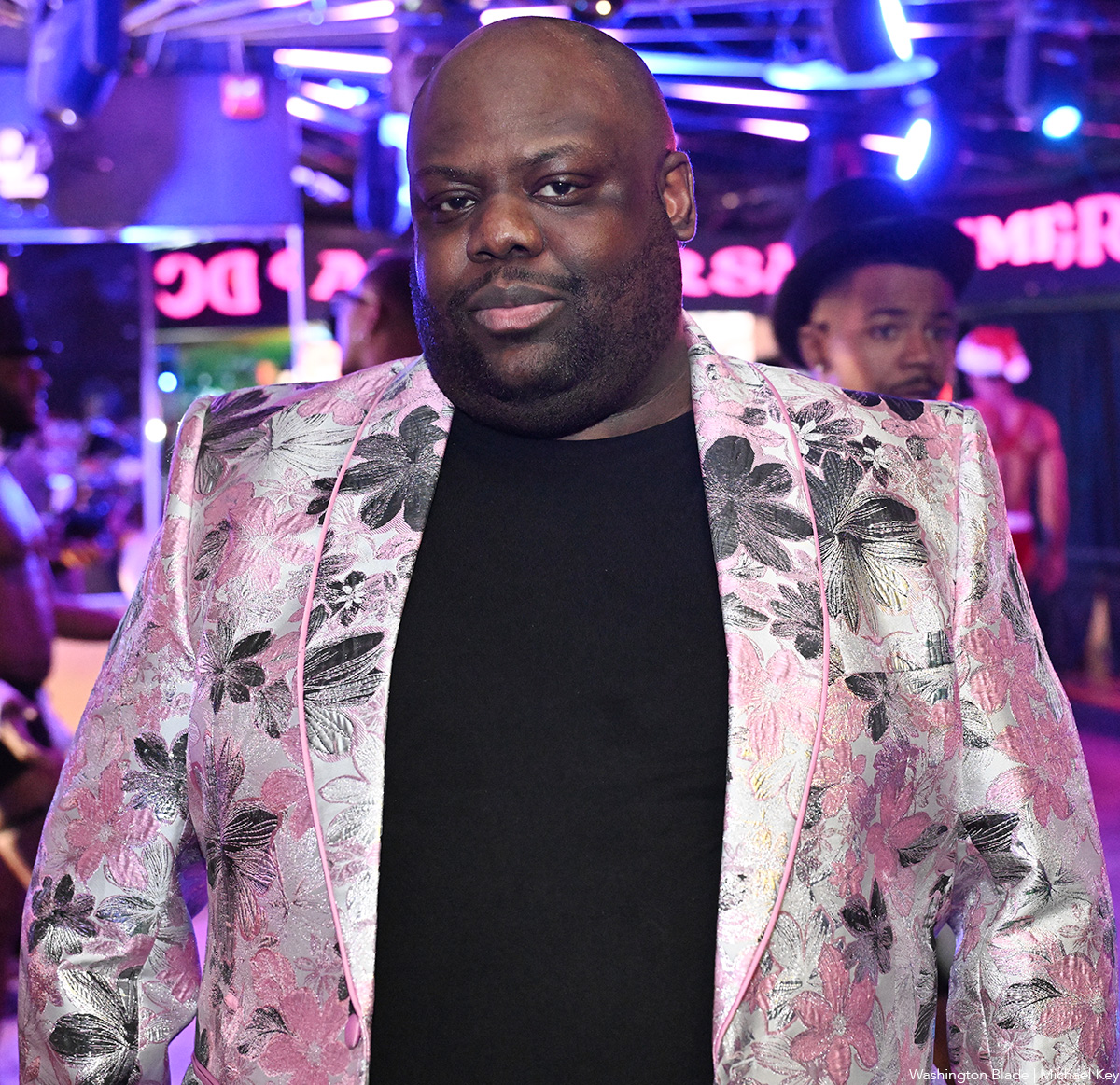
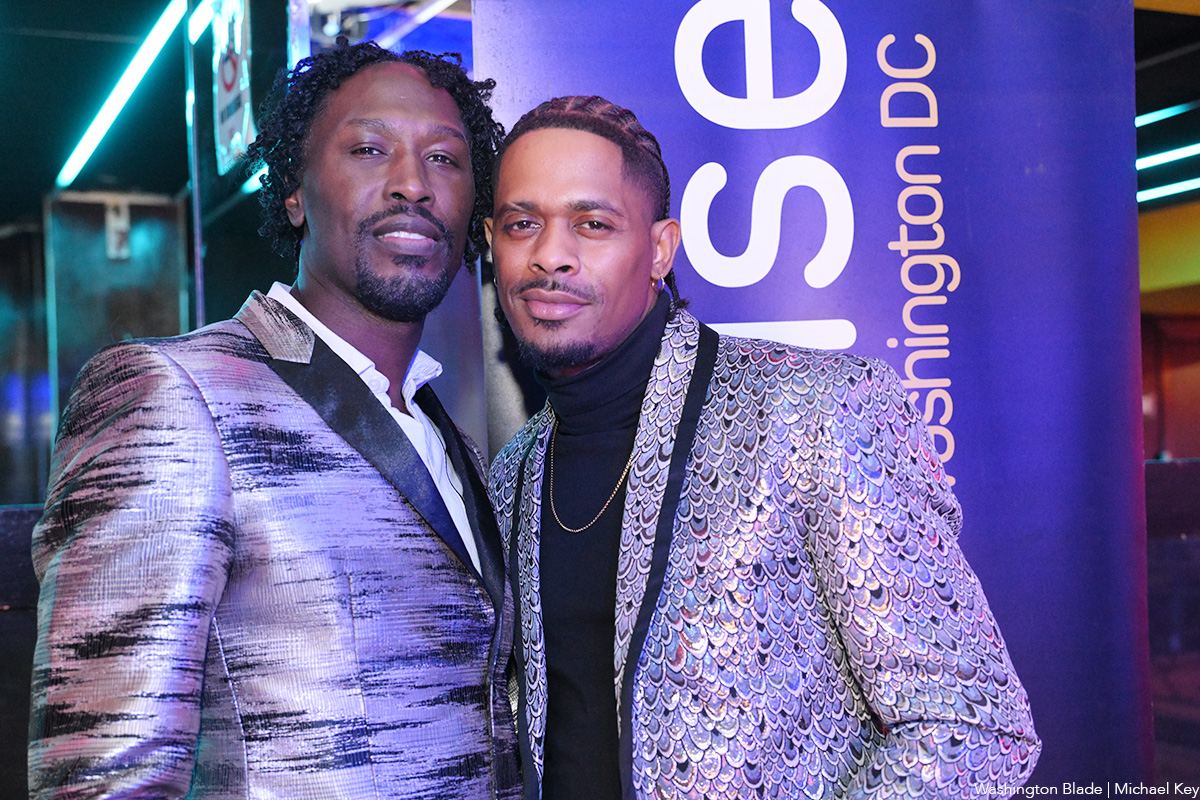
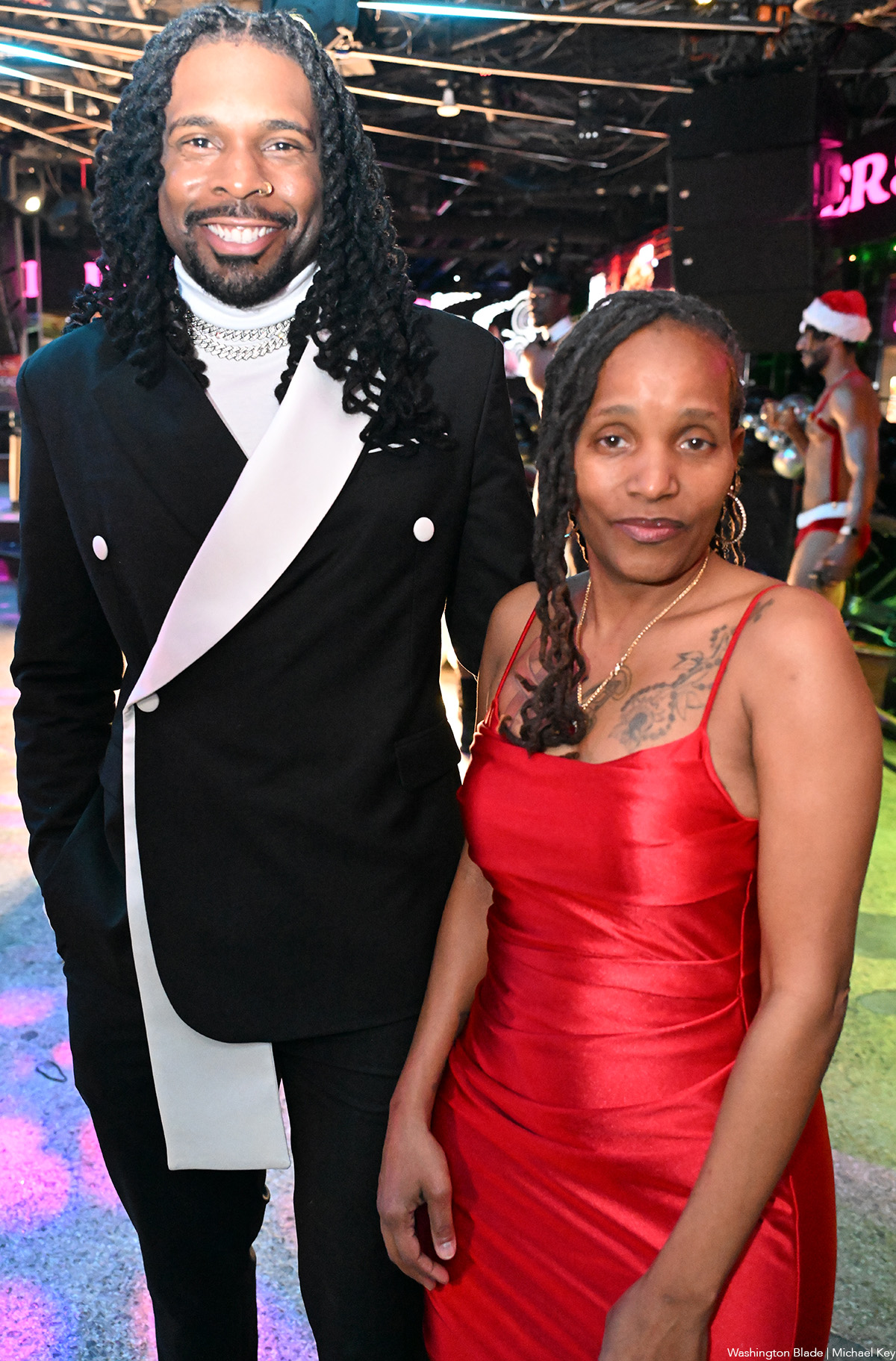
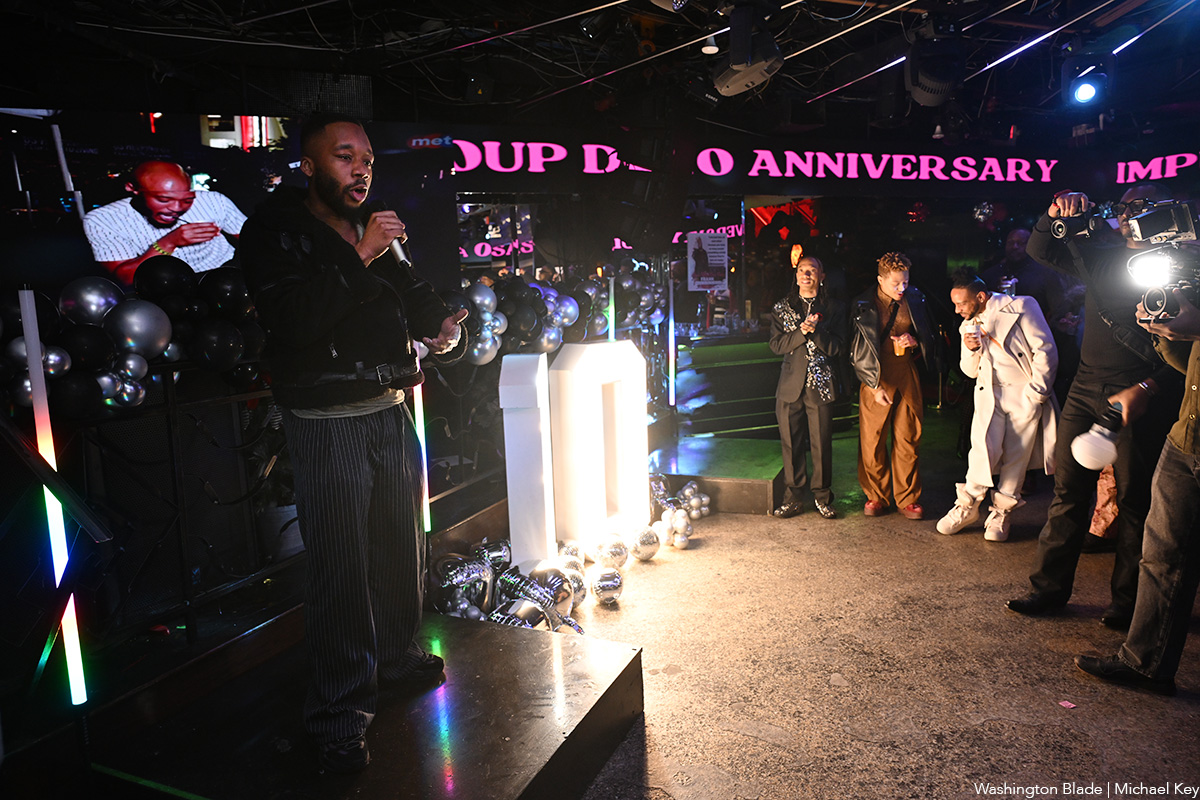
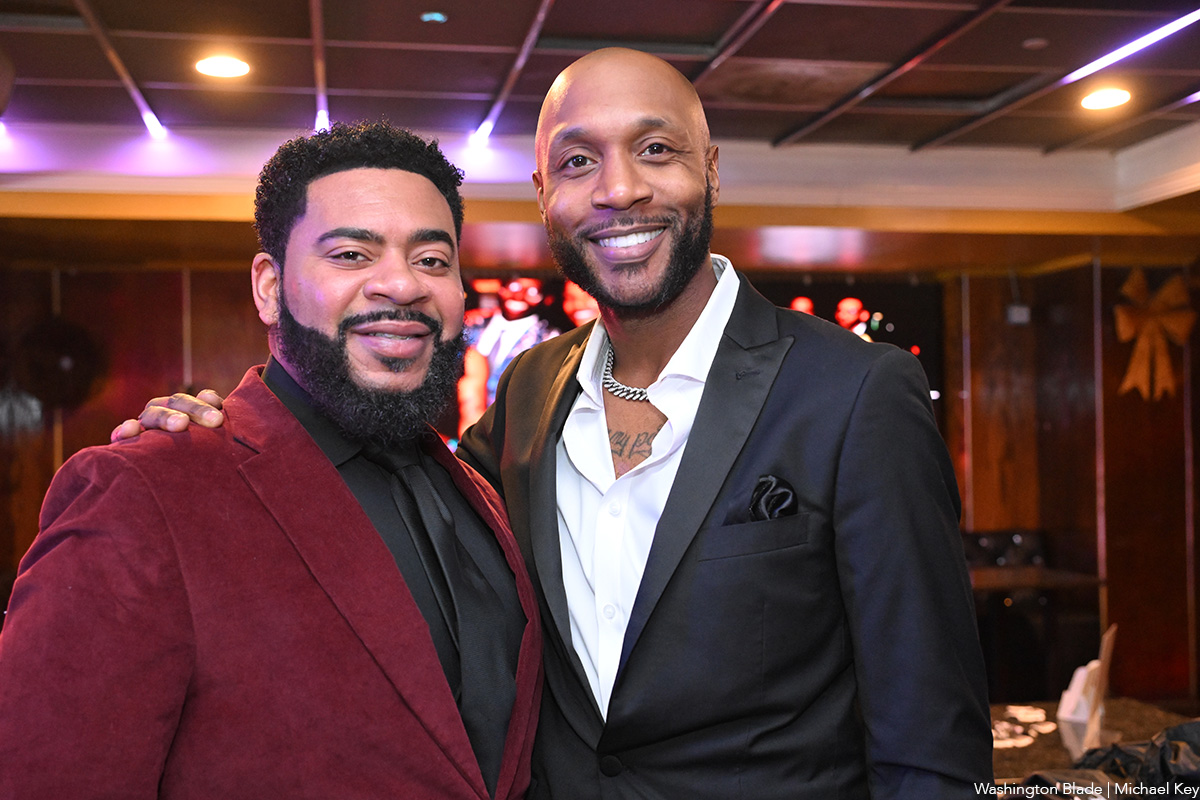
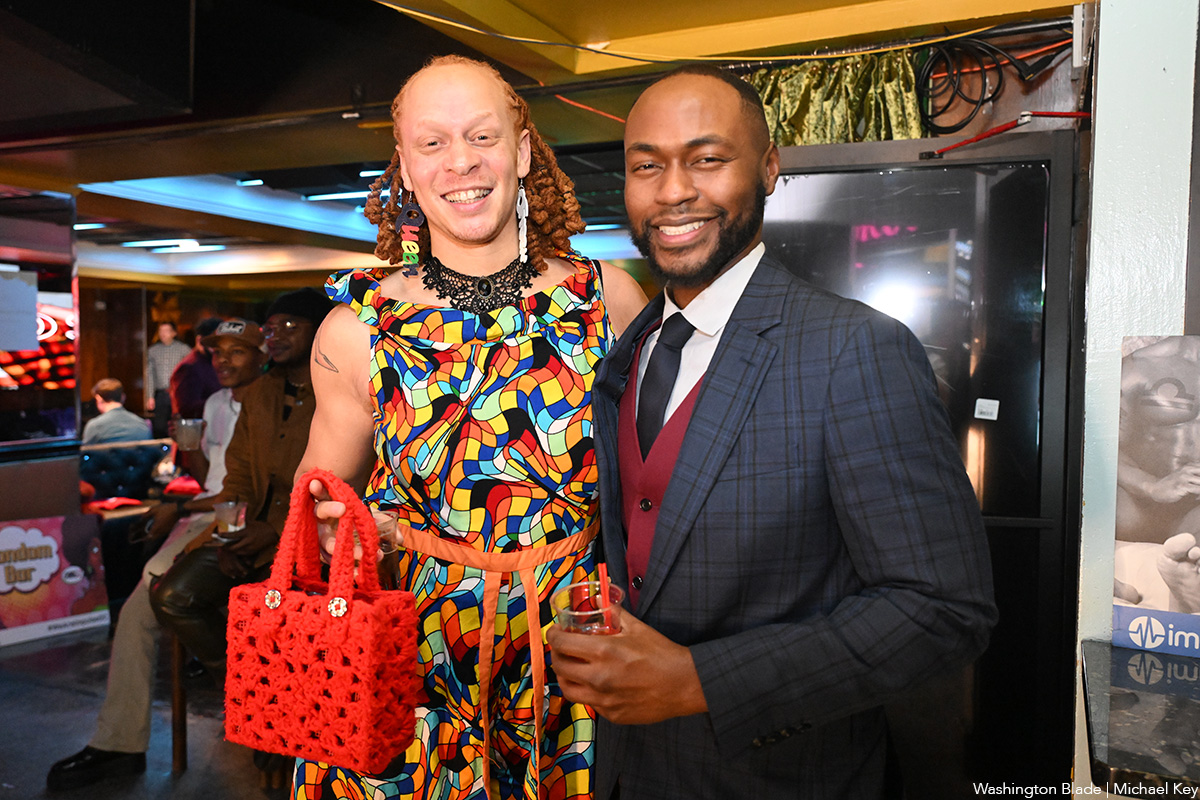
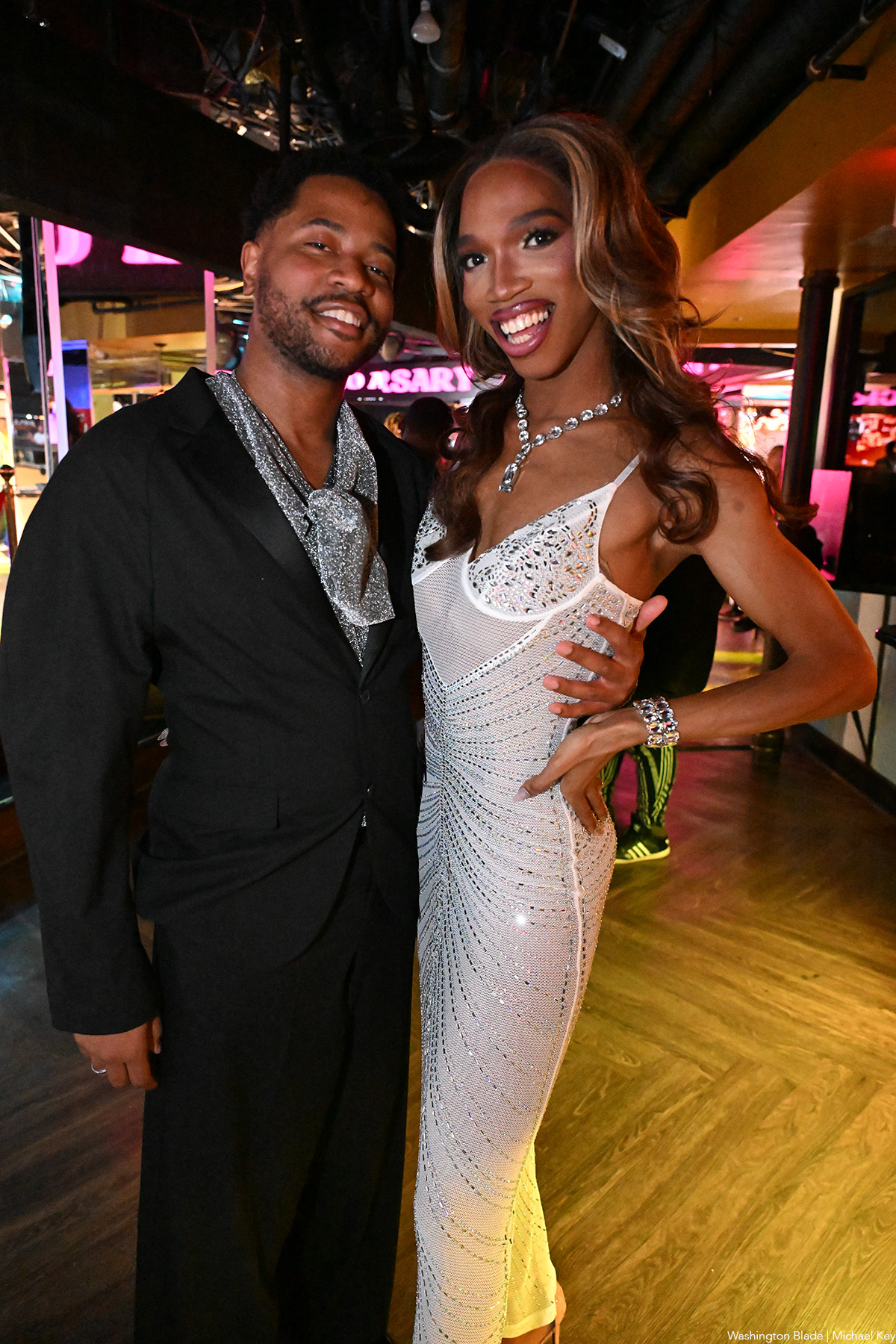
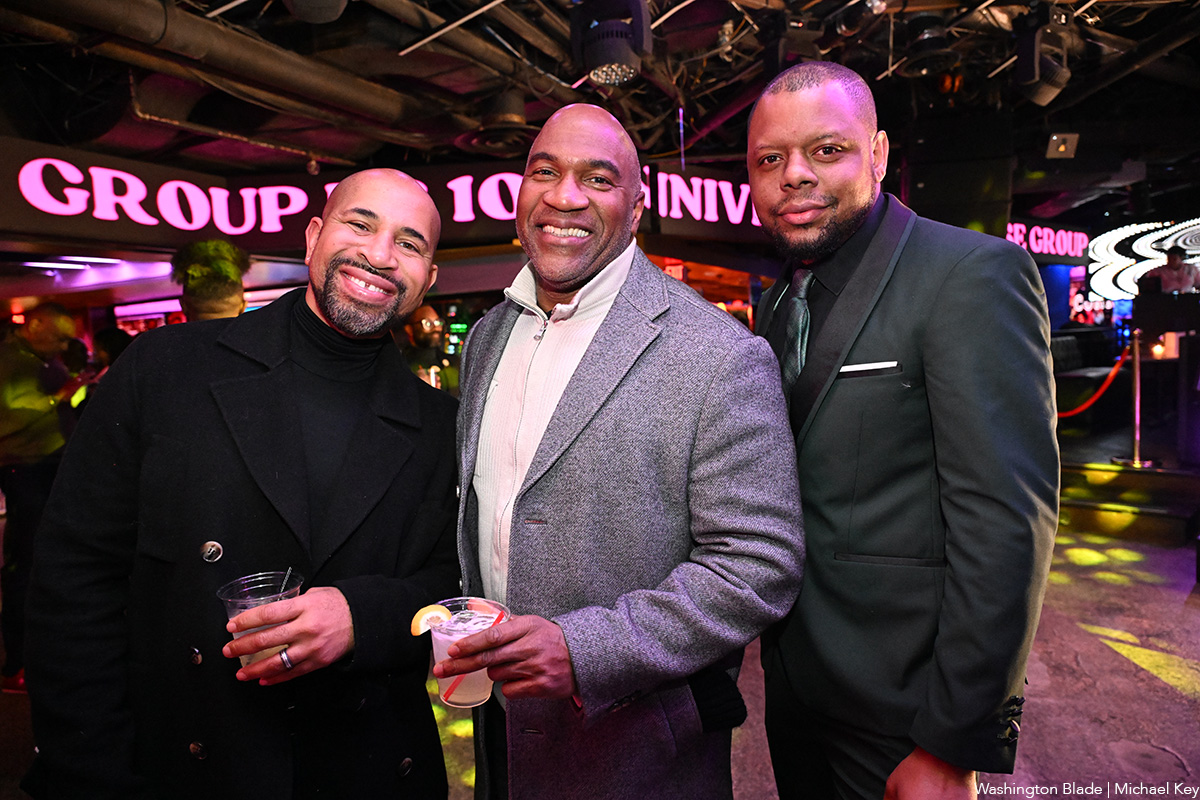
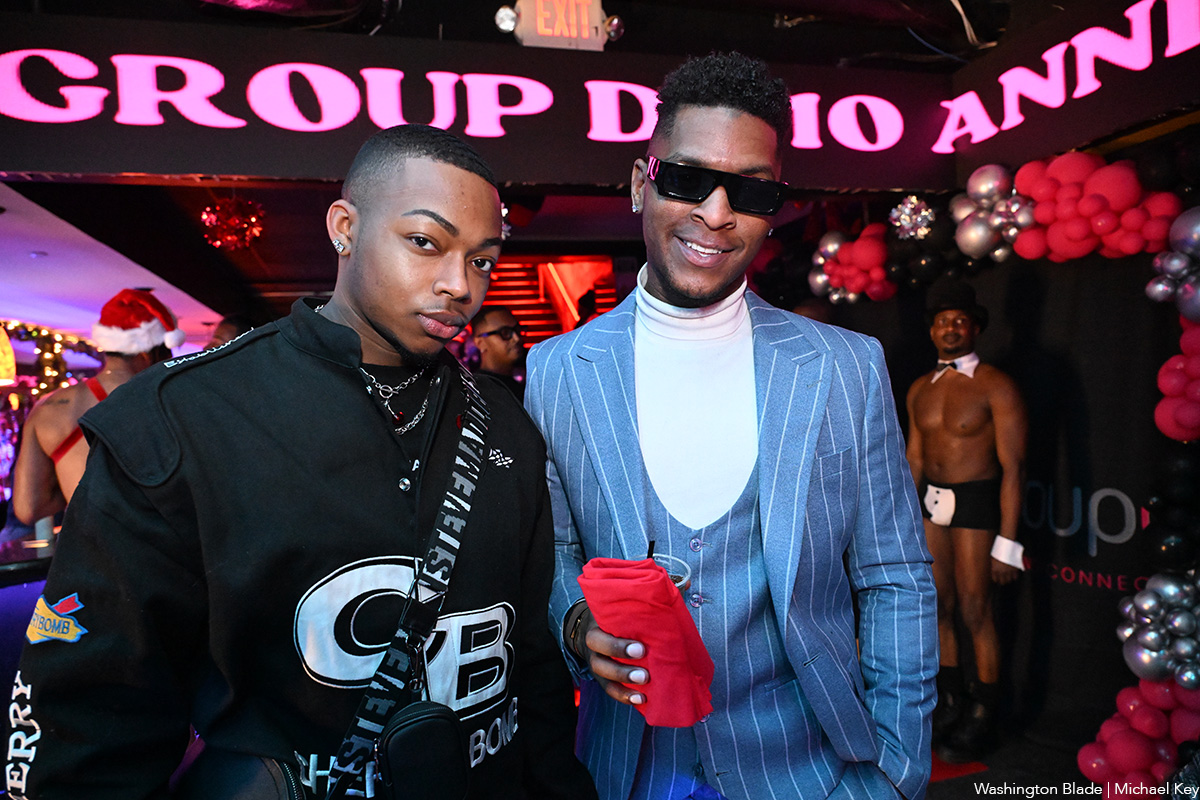
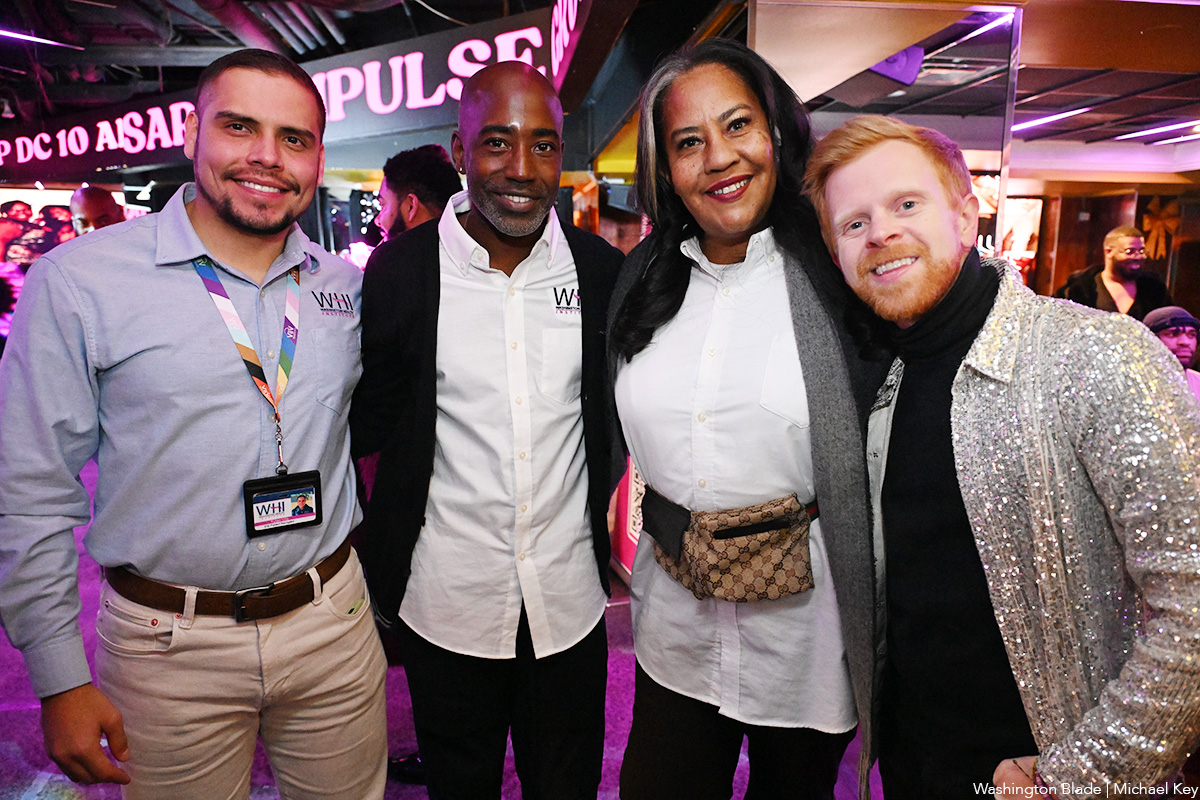

Rob Reiner, most known for directing untouchable classics like “The Princess Bride,” “Misery,” “When Harry Met Sally…,” and “Stand by Me,” died Dec. 14 alongside his wife, Michele Singer Reiner, in their Los Angeles residence. While investigations are actively underway, sources have told PEOPLE Magazine that the pair’s son, Nick Reiner, killed his parents and has been taken into custody.
Reiner was a master of every genre, from the romantic comedy to the psychological thriller to the coming-of-age buddy movie. But in addition to his renowned work that made him a household name, Reiner is also remembered as a true advocate for the LGBTQ community. In 2009, Reiner and his wife co-founded the American Foundation for Equal Rights, helping fight against California’s Prop 8 same-sex marriage ban. They were honored at the 2015 Human Rights Campaign Las Vegas Gala.
In a statement, HRC President Kelley Robinson said: “The entire HRC family is devastated by the loss of Rob and Michele Reiner. Rob is nothing short of a legend — his television shows and films are a part of our American history and will continue to bring joy to millions of people across the world. Yet for all his accomplishments in Hollywood, Rob and Michele will most be remembered for their gigantic hearts, and their fierce support for the causes they believed in — including LGBTQ+ equality. So many in our movement remember how Rob and Michele organized their peers, brought strategists and lawyers together, and helped power landmark Supreme Court decisions that made marriage equality the law of the land — and they remained committed to the cause until their final days. The world is a darker place this morning without Rob and Michele — may they rest in power.”
Reiner’s frequent collaborators have also spoken out as the industry is in mourning, including figures like Ron Howard and John Cusack.
A joint statement from Jamie Lee Curtis and Christopher Guest (who starred in Reiner’s “This is Spinal Tap”) reads: “Christopher and I are numb and sad and shocked about the violent, tragic deaths of our dear friends Rob and Michele Singer Reiner and our ONLY focus and care right now is for their children and immediate families and we will offer all support possible to help them. There will be plenty of time later to discuss the creative lives we shared and the great political and social impact they both had on the entertainment industry, early childhood development, the fight for gay marriage, and their global care for a world in crisis. We have lost great friends. Please give us time to grieve.”
While attending the 2019 HRC Los Angeles Dinner, Reiner spoke out about the need for equality: “We have to move past singling out transgender, LGBTQ, black, white, Jewish, Muslim, Latino. We have to get way past that and start accepting the idea that we’re all human beings. We’re all human beings, we all share the same planet, and we should all have the same rights, period. It’s no more complicated than that.”















